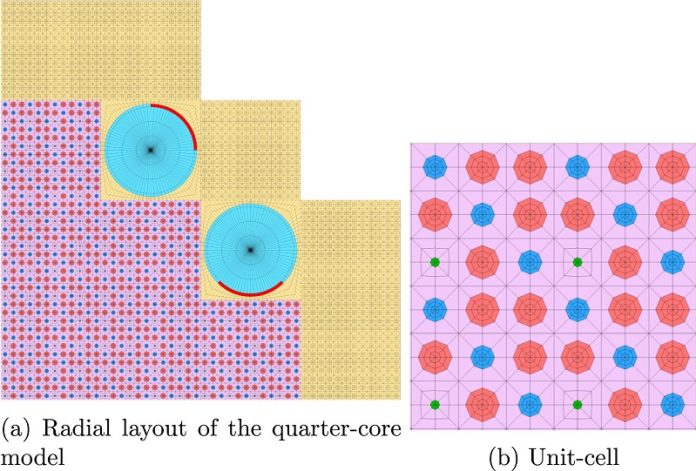
Nuclear microreactors—compact, transportable power sources that can produce up to 20 megawatts of thermal energy—could one day supply reliable, carbon-free energy to places ranging from remote villages to military bases and even cargo ships.
But for these reactors to be practical, they must be able to automatically adjust their power output to meet changing demand, a process known as load following.
Currently, in large nuclear reactors, human operators manually adjust power levels.
While this works for big plants connected to major grids, it would be too costly and impractical for smaller microreactors in isolated or mobile settings.
A new study led by the University of Michigan, published in Progress in Nuclear Energy, presents a physics-based algorithm that could solve this problem, allowing microreactors to autonomously match power output to real-time needs.
“Many startup and legacy companies in the U.S. are pushing toward broad deployment of nuclear microreactors,” said Brendan Kochunas, associate professor of nuclear engineering and radiological sciences at the University of Michigan and the study’s lead author.
“Our method shows how they can achieve this in an economically viable way, while also making the reactors safer and more secure.”
The team’s work focused on High-Temperature Gas-Cooled Reactors (HTGRs), an advanced design that can be scaled up or down.
Their study was based on a model of the Holos-Quad (Gen 2+) microreactor but simplified enough to preserve key features such as power density, coolant temperature, and pressure.
The researchers used a technique called model predictive control (MPC), which predicts how a system will behave in the future and adjusts its settings to stay on track.
In the case of the microreactor, the MPC algorithm optimized the movement of control drums that surround the core. Rotating the drums inward reduces power, while turning them outward increases it.
To ensure accuracy, the team incorporated PROTEUS, a powerful simulation toolkit for detailed reactor physics.
When tested with a demanding ramp-up and ramp-down schedule of 20% power change per minute, the algorithm stayed within just 0.234% of the target. Unlike many modern control systems, this method does not rely on artificial intelligence. Instead, it is grounded entirely in physics and mathematics, which makes it transparent and easier to evaluate by regulators.
The researchers also ran extensive sensitivity tests to confirm the algorithm’s robustness under different conditions.
The results show that autonomous control of nuclear microreactors is not only feasible but also reliable.
Kochunas emphasized that this marks a shift in how reactors and their control systems can be developed. “We can now design reactors and their instrumentation and control systems together from the ground up, rather than trying to retrofit them afterward,” he said.
This breakthrough could accelerate the safe deployment of nuclear microreactors worldwide, bringing flexible, carbon-free energy to places that need it most.



